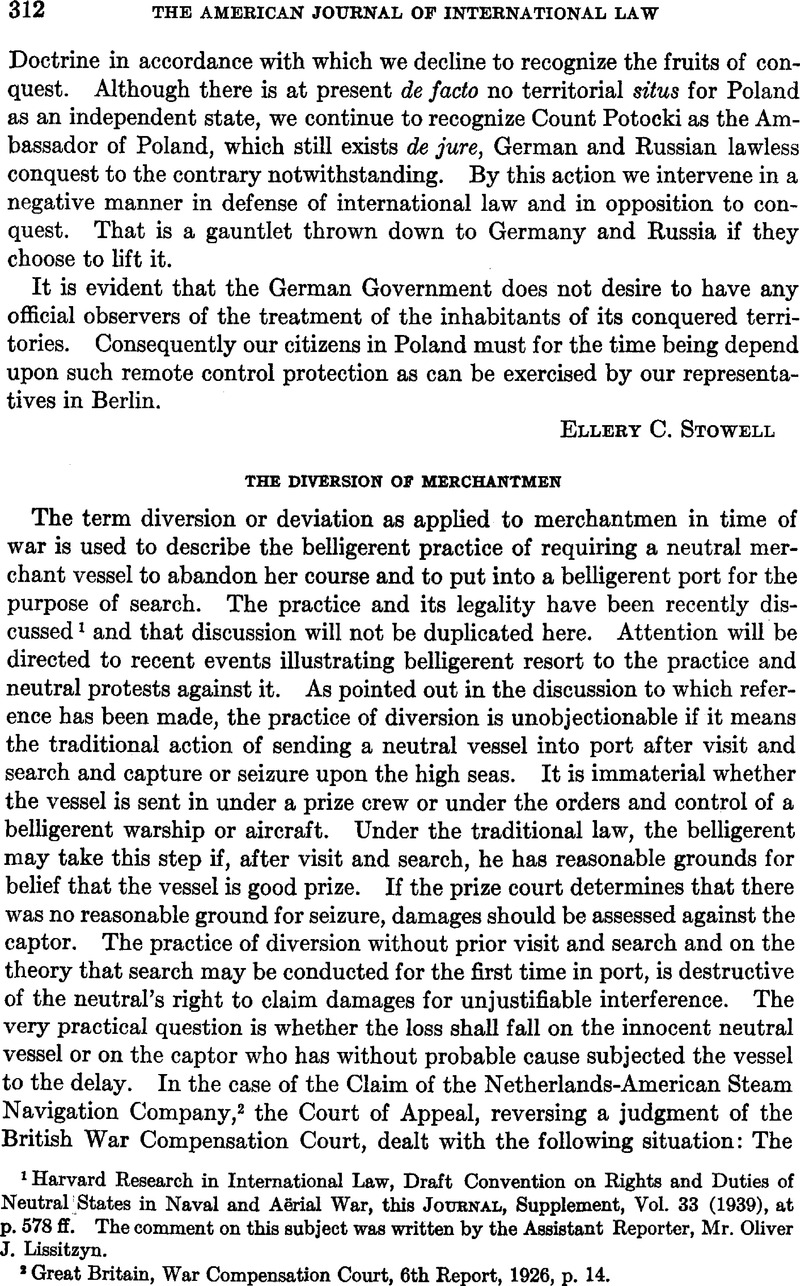Published online by Cambridge University Press: 12 April 2017

1 Harvard Research in International Law, Draft Convention on Rights and Duties of Neutral States in Naval and Aerial War, this Journal, Supplement, Vol. 33 (1939), at p. 578 ff. The comment on this subject was written by the Assistant Reporter, Mr. Oliver J. Lissitzyn.
2 Great Britain, War Compensation Court, 6th Report, 1926, p. 14.
3 Loc. cit., p. 21.
4 See Order V, Prize Court Rules, 1914, Great Britain, Manual of Emergency Legislation (1914), p. 266.
5 Cf. the report in the New York Times, March 7,1940, that the German Government has taken this position. On belligerent convoy, see the Harvard Draft, loc. cit., p. 674 ff. On neutral acquiescence in illegal belligerent measures, see ibid., p. 420.
6 See notice issued through the British Consulate General, New York, Sept. 11, 1939, CCH War Law Service, No. 65,551.
7 Cf. Department of State Bulletin, Vol. II, p. 5; Commerce Reports, Jan. 13,1940, p. 25; CCH War Law Service, Nos. 40, 620, 65,556, 66,005, 66,015. For a description of the navicert system during the World War, see Ritchie, The “Navicert” System During the World War (1938).
8 So called from the name of the steamship line whose vessels first utilized this procedure in the present war. There are, however, examples of similar practices in the past.
9 It has been stated that such officials operate, for example, in Italian ports; see Life magazine, Jan. 15, 1940, p. 47.
10 Department of State Bulletin, Vol. II, p. 4. See also the protest of Nov. 20, 1939, against the British Order in Council of Nov. 27, 1939, ibid., Vol. I, p. 651. The text of the British Order is in CCH War Law Service, No. 65,557. See the further protest of Jan. 20, 1940, Department of State Bulletin, Vol. II, p. 94. In their protest of Dec. 27, 1939, regarding the treatment of American mails, the United States objected particularly to the “practice of taking mails from vessels which ply directly between American and neutral European ports and which through some form of duress are induced to call at designated British control bases.” Ibid., p. 3.
11 Ibid., Vol. I, pp. 50 and 69.
12 Cf. The Bemisse and The Elve, (1921) 1 A. C. 458.
13 Harvard Draft, loc. cit., pp. 599–600.
14 Suggestions for a system of certification are elaborated in the Harvard Draft, loc. cit.,pp. 500–504, 506 ff. and 775 ff.